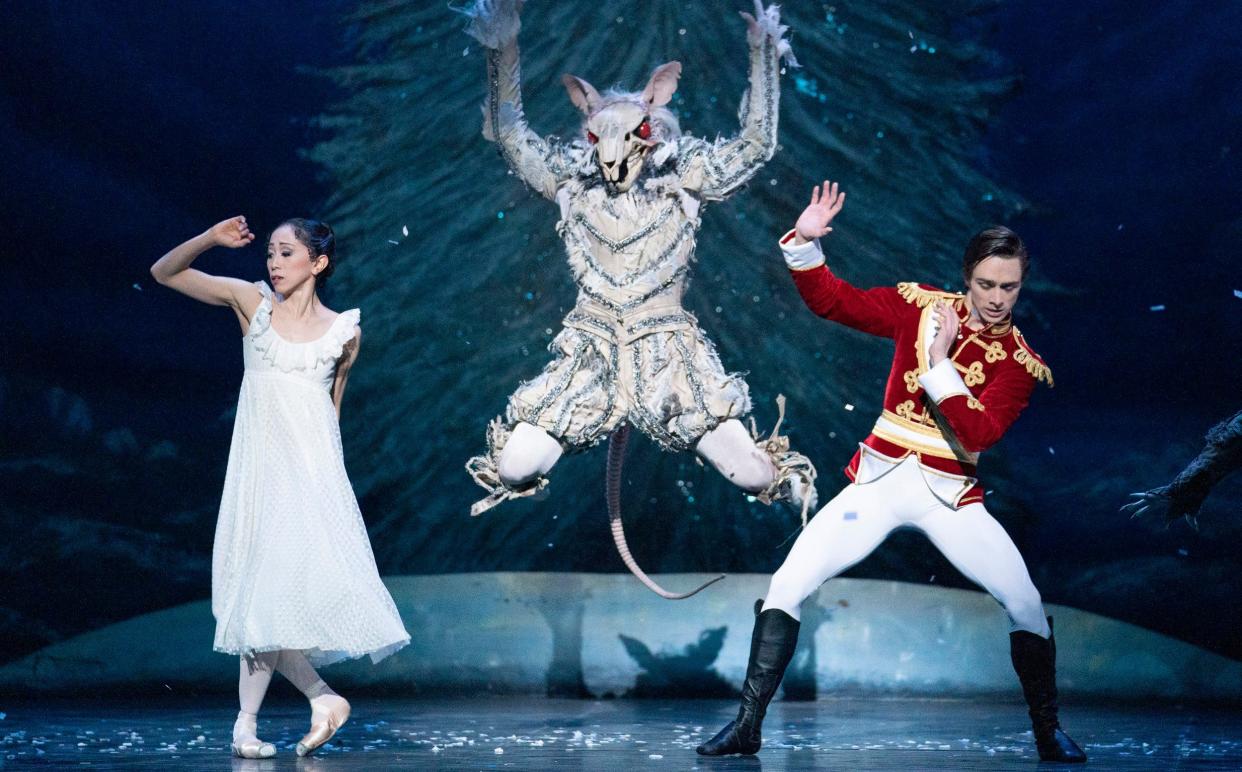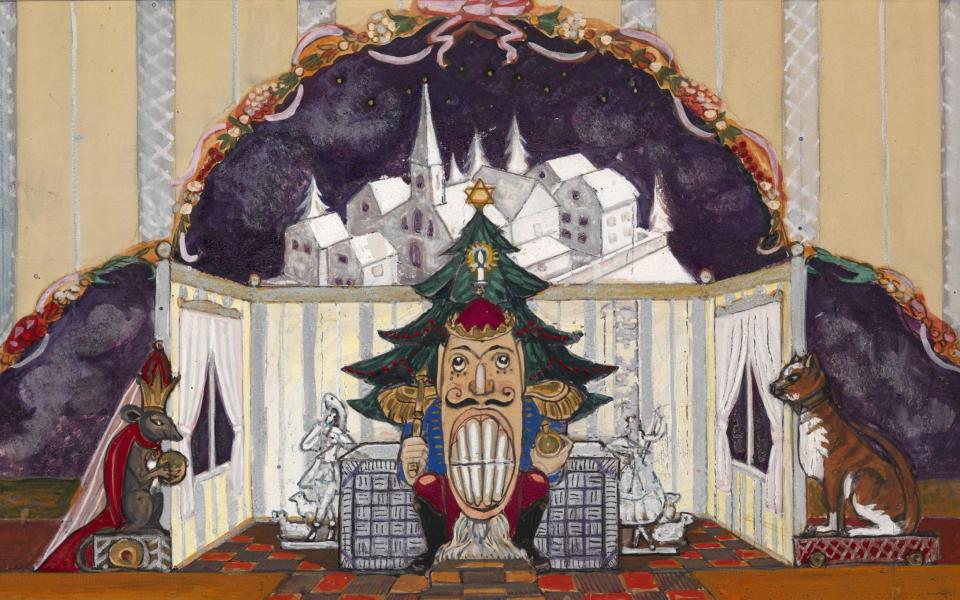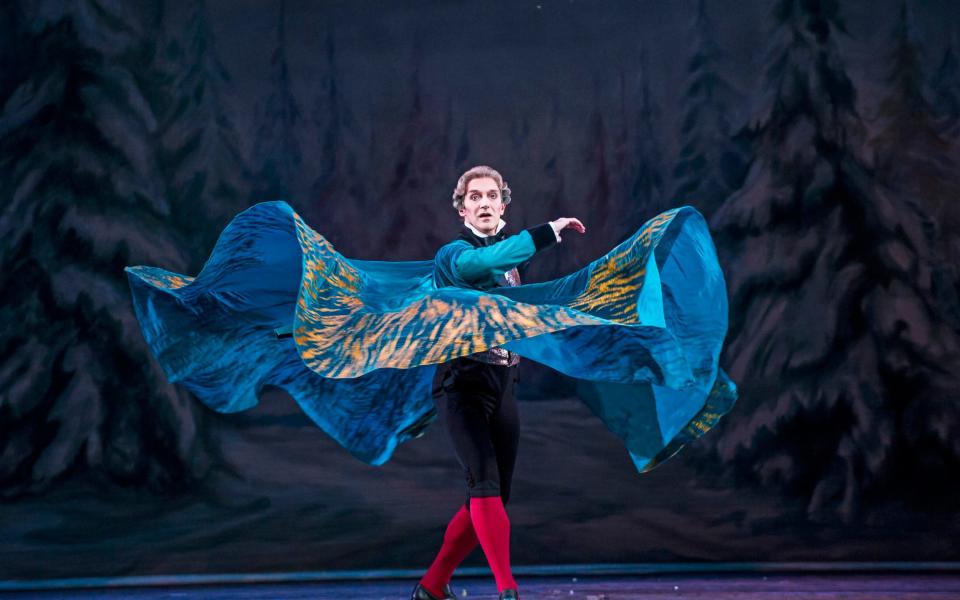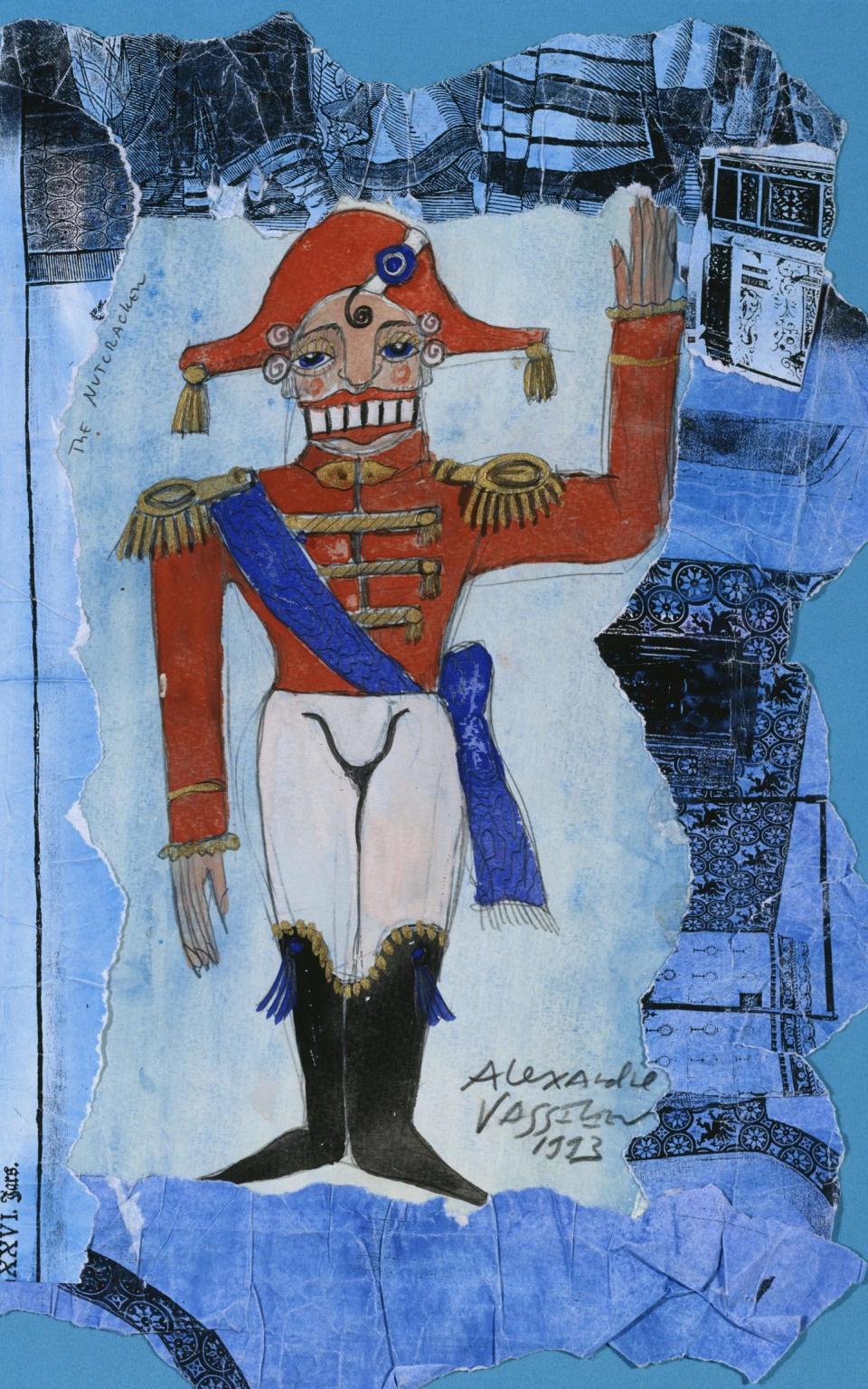In search of the real Nutcracker: a tale of sickness, psychosis and suicide

- Oops!Something went wrong.Please try again later.
- Oops!Something went wrong.Please try again later.
- Oops!Something went wrong.Please try again later.
- Oops!Something went wrong.Please try again later.
Two centuries after his death, E T A Hoffmann’s influence is far-reaching. He’s the cursed, drunken hero of Jacques Offenbach’s opera The Tales of Hoffmann. His 1817 short story The Sandman inspired both Léo Delibes’s 1870 ballet Coppélia and Sigmund Freud’s essay The Uncanny (1919). The eponymous dwarf of his 1819 novella Little Zaches even provided the grotesque, freakish model for Vladimir Putin in Puppets, Russia’s ill-fated version of Spitting Image. Of all his works, however, it is 1816’s The Nutcracker and the Mouse King that has had the most significant cultural impact.
Originally written for the children of his friend Julius Hitzig, Hoffmann’s story draws on traditional folk tales from Bohemia, Poland and Muscovy of nutcrackers coming to life, and on the writer’s own fascination with the imagination as both sanctuary and threat. Marie Stahlbaum, a highly sensitive, imaginative seven-year-old, is forced to defend her Christmas nutcracker from night-time visits by the evil seven-headed Mouse King. Having successfully defeated the villain and transformed her nutcracker to human form, she ascends to rule alongside him in a magical kingdom. Along the way, she faces disbelief and derision from her bourgeois family, yet never doubts that the experiences others dismiss as foolish fantasies were real.
The story was retold – in a somewhat lighter tone – by Alexandre Dumas in 1844. Dumas’s version of the tale then formed the basis for Tchaikovsky’s 1892 ballet The Nutcracker. The original tale is significantly altered for the two-act performance, creating a linear progression between two worlds – the Stahlbaum home and magical Land of Sweets. Although the ballet was initially poorly received (the ballerina who danced the Sugar Plum Fairy was mocked for being “corpulent”), by the mid-20th century it had achieved the status of Christmas staple. By the start of this century, the ballet had become so popular that the dance critic Sarah Kaufman was to complain of its “pervading tweeness”, deeming its festive ubiquity symptomatic of an artistic culture that had become risk-averse.
Certainly, it is possible to associate The Nutcracker – as a Christmas cultural phenomenon – with tradition, syrupiness, conservatism. How did a story of a wildly imaginative girl rebelling against a bourgeois family come to be viewed as belonging firmly on the side of the latter? Over the years, some productions – for instance, the 1983 Pacific Northwest Ballet version designed by the illustrator Maurice Sendak, in which the Mouse King’s pulsating tail wraps around the stage, and the Sugar Plum Fairy is nowhere to be seen – have hinted at the stranger qualities of the original tale. Yet the degree to which Hoffmann’s story was a challenge to the middle-class rationalism of 19th-century Bavaria, never just a festive treat, has largely been forgotten, hidden beneath all the glitz.
If the Nutcracker ballet took many years to be fully appreciated, the same might be said for Hoffmann himself. While he gained some recognition as an author during his lifetime, that is not to say he was generally admired. If anything, his popularity was regarded by many as a threat to both cultural and national well-being.

Hoffmann’s tales, wrote Walter Scott in his essay On the Supernatural in Fictitious Composition (1827), “are not the visions of a poetical mind”, having “scarcely even the seeming authenticity which the hallucinations of lunacy convey to the patient”. This association of Hoffmann’s dark stories with sickness and insanity was particularly concerning to German writers who believed a national literature might compensate for the absence of a German nation state. Goethe claimed that no one who truly cared for Nationalbildung could be anything but saddened to see Hoffmann’s “pathological works” infecting the minds of healthy readers. At a time when good literature was associated with a morally and politically healthy society, Hoffmann was viewed – both personally and artistically – as diseased and, worse yet, contagious.
The problem was not simply that Hoffmann was a romantic, sharing an interest in testing imaginative limits with fellow radicals. To his detractors, Hoffmann’s problem was specific to Hoffmann alone. The 19th-century writer and critic Joseph von Eichendorff claimed other romantics such as Ludwig Tieck and Achim von Arnim demonstrated an artistry that was wholly compatible with a German literary rebirth. Hoffmann, by contrast, had failed to fight his inner demons. In him, wrote Eichendorff, we saw the last flicker of a flame that had already devoured all that was of value. In 1844, the literary historian Georg Gottfried Gervinus declared Hoffmann’s life, death and writings to offer “a terrible warning to others”.
That Hoffmann could be viewed as such a danger, both artistically and politically, offers a strange kind of testimony to the power of his writing. It also meant the reception of his works – and his eventual recognition as a truly great writer, as opposed to an Offenbach caricature – was to follow a somewhat unusual path. Much of his legacy, particularly in the English-speaking world, is now encountered not through his works directly, but works about his works, or works about him creating his works. The way in which a story such as The Nutcracker and the Mouse King has been repeatedly lightened, reshaped and rendered more palatable might always have been inevitable. Nonetheless, to appreciate Hoffmann fully, and to understand why so many brilliant contemporaries feared him, it is worth exploring just how skilful his rendering of darkness could be.
In its original version, especially when viewed alongside other Hoffmann tales such as The Sandman and The Golden Pot, The Nutcracker and the Mouse King is terrifying. Looked at from a distance – and via endless reworkings – it is just the story of a girl and her toys. Up close, it is sharp, satirical, passionate – and deeply disturbing. Where Hoffmann excelled was in his depiction of the imagination as its own heaven and hell. Superficially frightening though they are, it is not the seven-headed mice or the living dolls that will get you. It’s your own mind and your inability to control what comes into it.
The Nutcracker and the Mouse King stands out among Hoffmann’s works in that it was (nominally) written for children and its main protagonist is a young girl. Many of Hoffmann’s most famously tortured figures are young men of an artistic bent, torn between bourgeois respectability brought by marriage to a dependable woman, and creative transcendence through the kind of supernatural union which hovers between eternal life and instant death.

The Sandman wears this darkness on its sleeve. Nathanael, tormented by childhood memories of night-time visits by the fiendish Coppelius, rejects his reasonable, doubting fiancée Clara in favour of the silent Olimpia. Upon discovering the latter is a doll, he commits suicide by leaping from a tower.
Anselmus, hero of 1814’s The Golden Pot, initially cuts a more positive figure than Nathanael. Possessed of a “childlike artistic spirit”, he, too, rejects a bourgeois marriage to a sensible woman for something more exotic – in his case, the alchemist Lindhorst’s snake-daughter Serpentina. The story ends with Anselmus’s “artistic ascension” to Atlantis, which he will rule with his serpent bride. A seemingly triumphant ending, many have read this as a metaphor for suicide by drowning.
It is not particularly difficult to see the way in which these patterns map onto The Nutcracker and the Mouse King. Marie is the tortured artist as prepubescent little girl, torn between a world of fantasy, as embodied by the nutcracker, and that of the respectable family, as exemplified by her military-obsessed brother Fritz (and even her family name Stahlbaum, or “steel tree”, which the literary scholar Jack Zipes connects to Marie’s domestic “imprisonment”). Like The Sandman’s Nathanael and The Golden Pot’s Anselmus, Marie finds herself both drawn and repelled by an older male figure – in this case, the clockmaker Drosselmeier – who seems to straddle multiple worlds. The object of her affection, like that of Nathanael, occupies the uncanny valley between human and doll.
Motifs of psychosis and suicide are easy to trace. On the night of the nutcracker’s arrival, during the battle between the mice and the toys, Marie cuts her arm on glass, narrowly missing a vein. Afterwards she is ill for days. Following her visit to the Kingdom of Dolls with the now-liberated nutcracker, Marie finds no one believes her stories. She is no longer permitted to mention them, but they continue to occupy her mind. She stops playing with her toys and even stops speaking – why should she, when others only see her as a silly girl?

Marie’s final betrothal and marriage to the nutcracker restored to his human form (after she has broken the Mouse Queen’s curse), in the form of Drosselmeier’s nephew, feels odd and unsettling. His sudden appearance within the bourgeois world of the Stahlbaums comes immediately after Marie finally dares speak of her nutcracker again, before falling unconscious. Her “recovery” feels more like a final rupture than validation. Perhaps Marie, like Nathanael, can’t fit in, falls in love with a doll, goes through a period of deep depression, and ends up completely lost. Perhaps, like Anselmus, she takes the leap into total oblivion.
Or maybe she really does ride off to rule in a kingdom of marzipan castles, where, as the final line tells us, all wonders can be seen “by those who have eyes to see them”. Were it not for the ambiguity of the ending, we would not be enjoying the Nutcracker as a Christmas treat.
Hoffmann died in 1822, at 46. For much of the remaining century, his work was championed outside of his homeland, particularly in France. His rehabilitation in the German literary canon took place in the 20th century. Scholars have gone back and forth over whether he was misrepresented or merely ahead of his time. Many of his concerns – dolls that become people, the fragility of identity, our inability to say with certainty what is real – feel contemporary. Far from being the last of his kind, he can be thought of as a visionary.
Yet if he were writing now, I suspect he would still be considered problematic. Recklessness – political as well as artistic – infuses his writing. One of his final works, Master Flea, prompted a major libel case for its caricaturing of the director of the Prussian military police. Hoffmann had high principles, but preferred burning bridges to building them: his artistry thrives on provocation combined with the darkest sincerity (I dread to think what kind of social media presence he might have had). His too-muchness was a compulsion and in that sense, Goethe was right. There is self-destruction embedded in his tales – a way in which for Hoffmann, creativity and fantasy become unliveable.
How can you live in your mind? How can anyone? Such questions haunt The Nutcracker and the Mouse King. As we enter Nutcracker season – cosy, cinnamon-sweet – it’s worth remembering that a darker flavour doesn’t need adding. It’s always been there, lurking beneath two centuries’ worth of icing.
The Nutcracker is performed at the Royal Opera House, London WC2 (roh.org.uk) until Jan 13; the Coliseum, London WC2 (ballet.org.uk) from Thurs to Jan 7; Leeds Grand Theatre (northernballet.com) until tomorrow; and Birmingham Hippodrome (brb.org.uk) tonight

